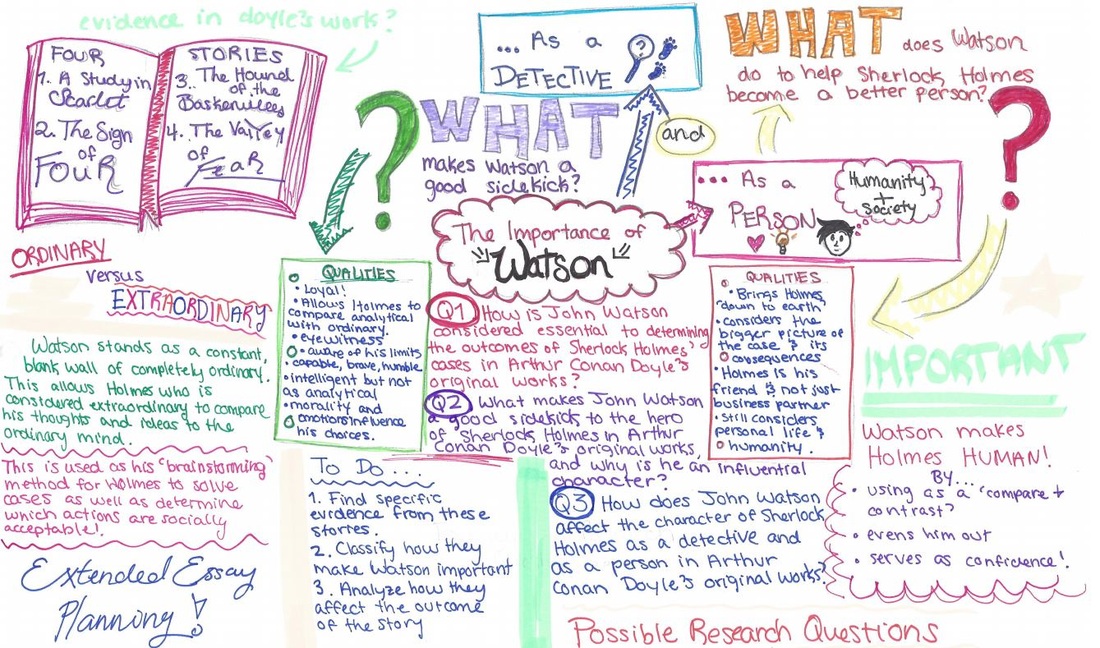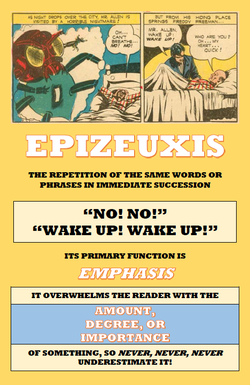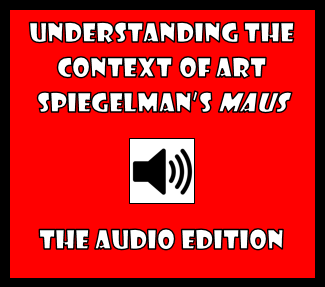|
by Glen Downey, Comics in Education, www.comicsineducation.com Never underestimate what the visual can do in planning a major writing taskIt's easy to dismiss pictures and drawings as something that we dabbled in as children, and that now, as serious adult writers, we should get on with the business of words, words, words. This attitude presupposes, however, that words and images should not mix, and it goes back to our previous discussions about the differences and discrepancies in attitudes towards literature, visual art, and the combination of the two (i.e. visual narrative). When it comes to planning out a major assessment task, like the International Baccalaureate's Extended Essay--a piece of persuasive prose that is 4000 words long--have a look at what a student at The York School did in planning out her paper on the character of John Watson in the Sherlock Holmes stories. The great thing about the visual here is not that it simply beautifies the planning process. Rather, it gives the student an opportunity to mull things over as they write, create, make connections, and attempt to articulate an approach to the essay. The next time you have students engage in a visual brainstorming activity, get them to consider what they are thinking in the moments when they are "merely" drawing. Chances are they are thinking about a wealth of different ideas and considering how to make additional connections among them. Their doodling, after all, is just the hand's way of expressing how hard at work the brain really is.
0 Comments
Your comment will be posted after it is approved.
Leave a Reply. |
Glen DowneyDr. Glen Downey is an award-winning children's author, educator, and academic from Oakville, Ontario. He works as a children's writer for Rubicon Publishing, a reviewer for PW Comics World, an editor for the Sequart Organization, and serves as the Chair of English and Drama at The York School in Toronto. If you've found this site useful and would like to donate to Comics in Education, we'd really appreciate the support!
Archives
February 2019
|




 RSS Feed
RSS Feed
